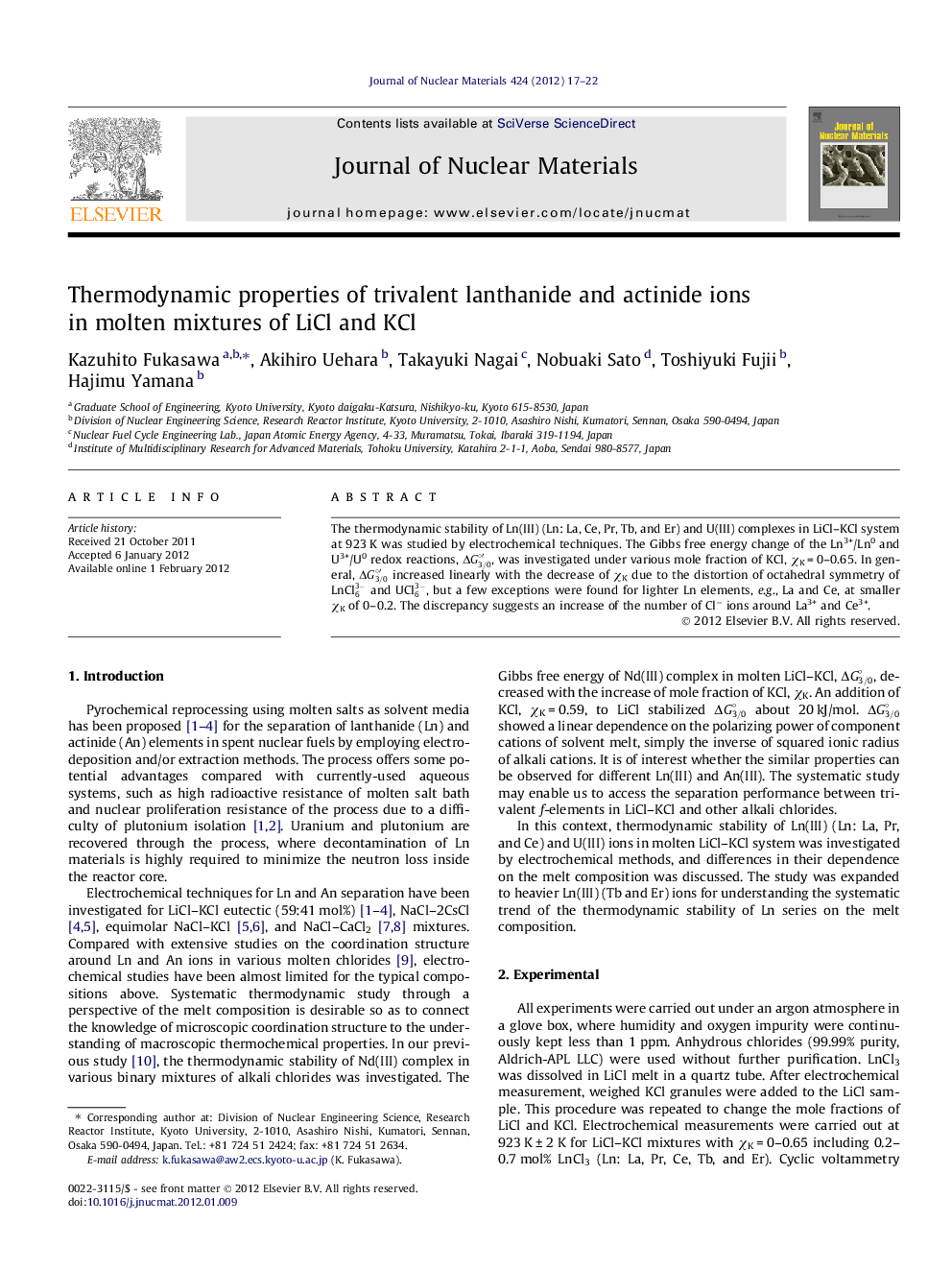| Article ID | Journal | Published Year | Pages | File Type |
|---|---|---|---|---|
| 1566159 | Journal of Nuclear Materials | 2012 | 6 Pages |
The thermodynamic stability of Ln(III) (Ln: La, Ce, Pr, Tb, and Er) and U(III) complexes in LiCl–KCl system at 923 K was studied by electrochemical techniques. The Gibbs free energy change of the Ln3+/Ln0 and U3+/U0 redox reactions, ΔG3/0∘′, was investigated under various mole fraction of KCl, χK = 0–0.65. In general, ΔG3/0∘′ increased linearly with the decrease of χK due to the distortion of octahedral symmetry of LnCl63- and UCl63-, but a few exceptions were found for lighter Ln elements, e.g., La and Ce, at smaller χK of 0–0.2. The discrepancy suggests an increase of the number of Cl− ions around La3+ and Ce3+.
► Thermodynamic stability of M(III) complexes (M: U, lanthanides) for LiCl–KCl melts. ► Generally, the stability linearly increased with the octahedral symmetry of MCl63-. ► The linearity was not kept for larger M3+surrounded by different number of Cl−. ► The covalent character of 5f orbital would exist in the U3+−Cl− bonding.
